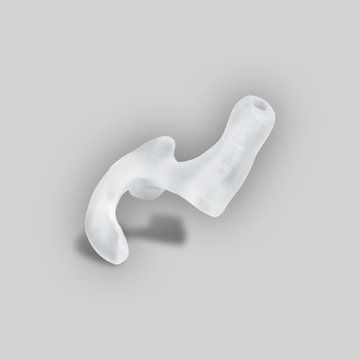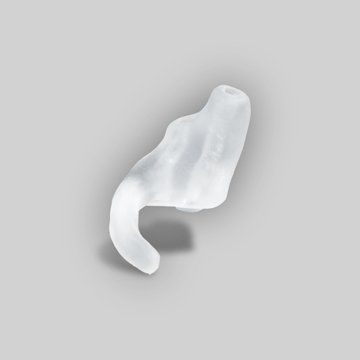THIN TUBE
THIN TUBE
About the Thin Tube Molds
The numbers TT1 through TT4 relate to the degree of loss,
and the necessary gain. As the number gets larger, the fitting
becomes more closed and the amount of possible gain increases.
Reasons for Thin Tube Fittings
To better achieve the patient’s goal, it’s helpful to identify the reason for a Thin Tube fitting.
Retention: The dome or fitting piece provided by the manufacturer won’t stay in the ear canal because of:
imperfect size of dome
lack of retention in the canal
length restrictions of the tubing
Feedback: feedback is still a concern with the dome attachment.
Occlusion: occlusion is still a concern, and even with the custom product, there may still be some need for modification. (This was previously not possible with the dome!)
We’re more than happy to help answer all your questions about Thin Tube earmolds before, during, and after the fittings. Please give us a call!
TT1: Canal without Retention Hook
Standard canal mold
Completely in the canal (CIC)
Fits full size of canal without wing or retention hook
Manufactured with an extra large vent, and may be used with SAV
Our smallest, least visible and most open TT mold.

TT2: #HF Canal with Modified Wing
Features:
Slightly more visible than the TT1 mold
Open canal
Beneficial in reducing occlusion
3HF ring is reduced to a small wing at the bottom of the concha for retention.

New ParagraphTT3: Canal with Modified Wing and “Thin SAV”
Features:
Standard canal style
Area between tube and wing is thicker for a large vent or SAV (10-20% of canal length)
More closed canal than the TT2

TT3 1/2: 3HF Canal with Modified Wing and “Medium Thickness SAV”
Features:
Standard canal style
SAV thickness is approximately 50% of canal length
New Paragraph

CONTACT US
Mid-States Laboratories, Inc.
600 N. St. Francis
P.O. Box 1140
Wichita, KS 67201
info@mid-stateslabs.com
Join Our List
Thank you for contacting us.
We will get back to you as soon as possible
We will get back to you as soon as possible
Oops, there was an error sending your message.
Please try again later
Please try again later
